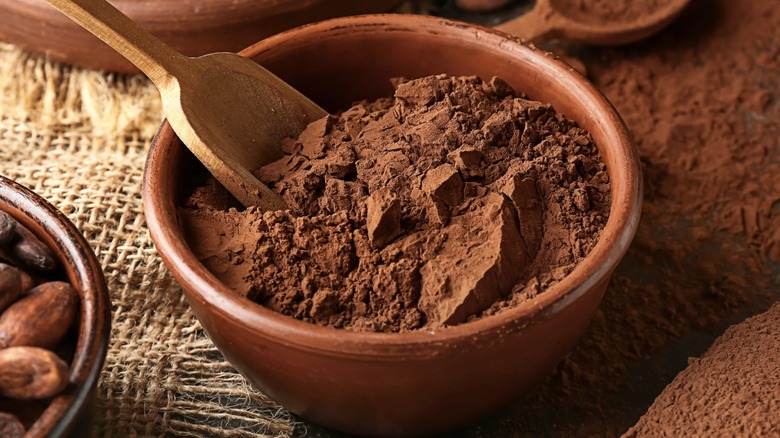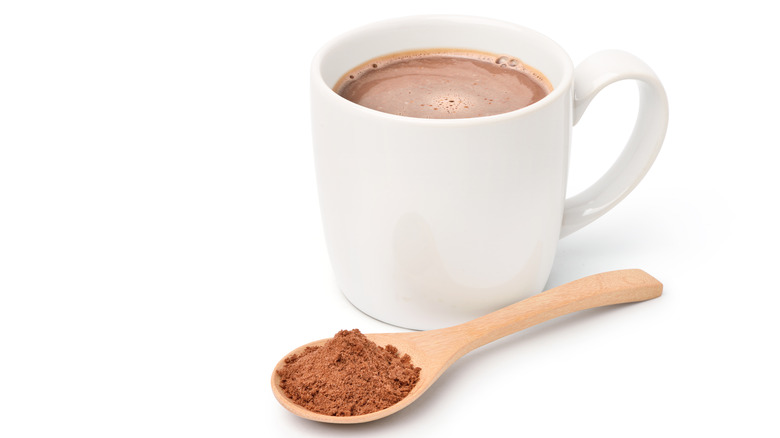What Happens When You Try To Mix Cocoa Powder With Cold Water?
When you think of cocoa powder, you likely first think of its many delicious uses in baking. You can use cocoa powder in cakes, brownies, or even a decadent hot chocolate recipe. Or, if hot chocolate isn't your style, you can mix cocoa powder into your coffee grounds for an extra chocolatey boost. The point is that cocoa powder evokes visions of sweet treats and cozy afternoons, not the sterile environment we associate with science labs. And yet, these days, TikTok is all about a particular science experiment involving cocoa powder and cold water.
If you spend any amount of time on TikTok, you've probably seen a couple of these videos. Some of them have millions upon millions of views, for crying out loud! Perhaps the most viewed explanation of this experiment, however, is the one posted by Nancy Bullard (a.k.a. Mrs. B. TV), with more than 34 million views. So what's the big deal with cocoa powder and cold water?
Cocoa powder reacts strangely to cold water
Teacher Nancy Bullard did the internet a favor after posting a more in-depth explanation of the cocoa powder in cold water experiment. As Bulliard demonstrates in the TikTok clip, dipping a spoonful of cocoa powder in cold water has no effect on the powder whatsoever. After a second or third dip, Bulliard points out that cocoa powder might appear to "absorb some of the water," but a little tap seems to break the damp exterior, leaving the powder looking dry again. This is because cocoa powder is hydrophobic, or water-repelling, and when it's piled up as it is on a spoon, it can't mix with water. Thus, water beads on top and rolls away.
@mrs.b.tv This is even cooler than the milk! 👀#hydrophobic #cocoapowder #learnontiktok #scienceathome #womeninstem #scienceismagic
To get cocoa powder (or even a packet of Swiss Miss, for that matter) to mix with water, you have to stir it thoroughly. When the cocoa powder particles get separated from each other, water molecules can get between them, and you end up with a tasty drink. No one wants a clump of dry, grainy powder stuck at the bottom of their mug.

